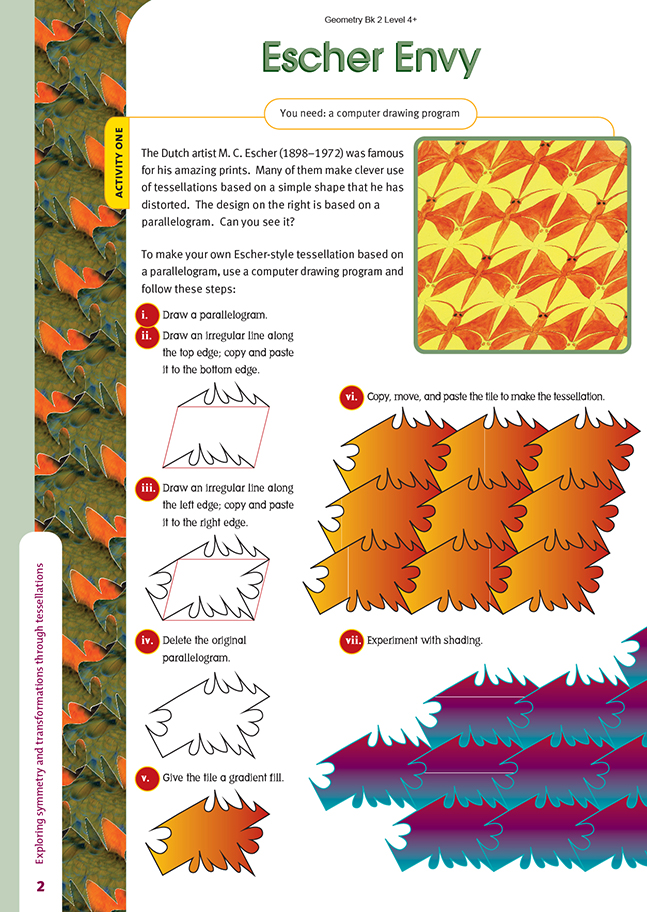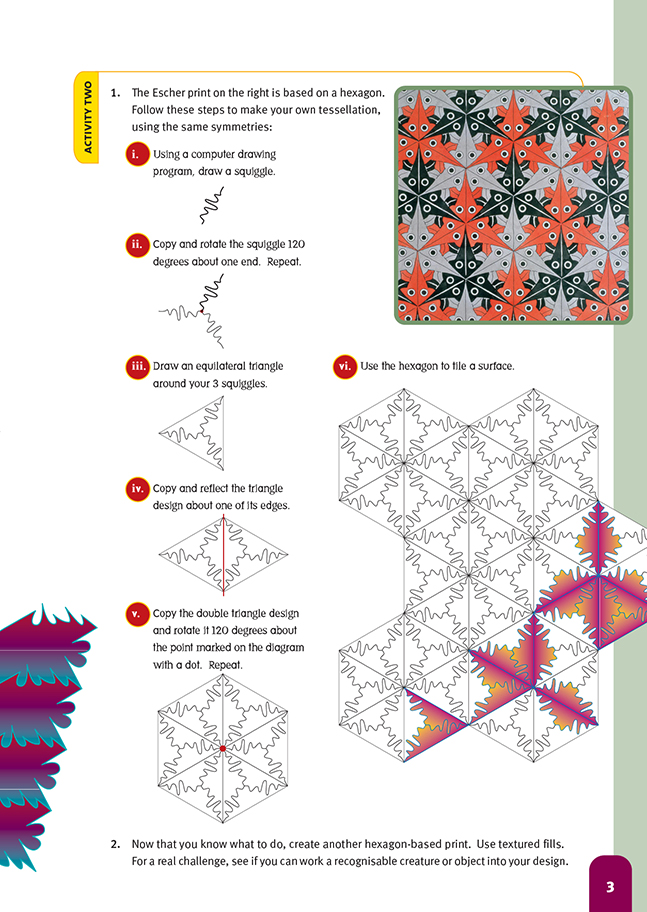This is a level 4 geometry strand activity from the Figure It Out series.
A PDF of the student activity is included.
Click on the image to enlarge it. Click again to close. Download PDF (354 KB)
explore transformations through tessellations
FIO, Level 4+, Geometry, Book Two, Escher Envy, page 2
computer drawing program
Although it is possible to create Escher-style tessellations without a computer (as Escher did), this activity assumes that your students will use one. A computer makes it possible for them to create attractive and complex patterns without the lengthy repetition that would otherwise be involved. If they are not sure how to use a drawing program, these two activities give them a suitable context in which to learn. The main
functions they will need to use are drawing, copying, pasting, and grouping.
Activity One
If they wish, the students can make very simple changes to the sides of their parallelogram and still create an attractive tessellation. The next example shows how two triangular translations (shaded) can create a tile that looks nothing
like the original parallelogram.
.gif)
Alternatively, the students could make a less obviously geometrical tessellation by using the freehand drawing tool, as in this example:
Activity Two
This time, the students base their tessellations on a hexagon. They use the same computer functions as in the first activity, with the addition of reflection and rotation. As they work, you should find them using the language of transformations to describe what they are doing.
Question 2 challenges the students to create a more complex design. They will find that it is surprisingly difficult to create a tessellation featuring a recognisable creature or object. If, however, they add eyes or a mouth, their shapes will start to look alive. Using a computer for this activity makes it easy to go back and add to or change the outline of the original tile to get a slightly different tessellation.
There are a number of websites devoted to tessellations and other sites that feature Escher's work. The official Escher website is www.mcescher.com
Answers to Activity
Activity One
Practical activity
Activity Two
1.-2. Practical activities


